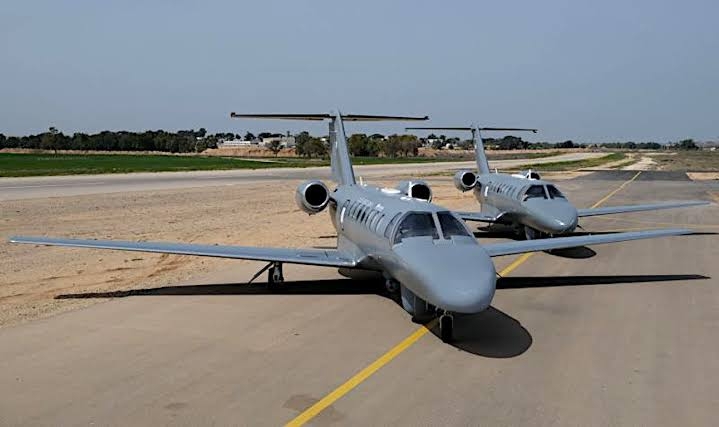A Nigerian Air Force (NAF) maritime patrol aircraft, Cessna Citation CJ3 on a routine flight on 6 February, lost its tyres on a touch and go flight had to carry out a controlled belly land at the Murtala Muhammed International Airport, Lagos.
The Chief of the Air Staff, Air Marshal Oladayo Amao,on Monday has directed the immediate constitution of a Board of Inquiry to determine the cause(s) of the NAF Maritime Patrol Aircraft Belly Landed in Lagos.
“Fortunately, there were no fatalities or injuries to any crew member and persons on the ground”, he noted.
Two years ago, Nigeria took delivery of two Special mission CJ3 Cessna aircraft. Both Special mission CJ3 Cessna aircraft are operated from the Nigerian Air Force (NAF) 107 Air Maritime Group (NAF 107 AMG) located in Benin city.
The acquisition is part of NIMASA’s Deep Blue Project, a multi-layered security framework set-up to protect Nigeria’s Economic Exclusive Zone.
The Special mission CJ3 Cessna aircraft were configured by Birds Aerosystems and likely fitted with the Leonardo SeaSpray AESA surveillance radar as well as an electro optical FLIR sensor.
The Nigerian Air Force has also selected Beechcraft King air 360i and Da-62 for its enhanced ISR requirements. Both ISR aircraft will join two ATR 42 maritime patrol aircraft, two Cessna Citation CJ3, one other Diamond DA42, and two Super King Air in providing comprehensive aerial surveillance and maritime patrol capabilities to the Nigerian Air Force.
The ISR and maritime patrol aircraft fleet enables the NAF’s to keep its Intelligence, Surveillance and Reconnaissance (ISR) assets in a persistent deployment mode; whereby multiple ISR platforms are deployed to the forward edge of the battlespace for a longer period of time.
In January 2019, leading developer of Airborne Missile Protection Systems (AMPS) and Airborne Surveillance, Information and Observation (ASIO) solutions Birds Aerosystems announced that it will supply two special mission aircraft equipped with its advanced maritime patrol sensor and integrated with a Mission Management system (MSIS) to an African customer. Birds declined to mention the client at that time.
According to Birds Aerosystems, the aircraft will share the operational picture with ASIO mission management stations installed on the customers’ naval Ships and HQ command, ensuring that all operating teams share a unified, real-time situational awareness picture.
BIRD’s advanced Mission Management System (MSIS) manages the complete mission and enables ASIO Airborne, Naval and Ground units to share real-time information.
MSIS collects and processes large amounts of information gathered from all onboard sensors which is then automatically classified, prioritized and clearly displayed using state of the art algorithms with an easy to use and intuitive human-machine interface.
Also, BIRD’s MSIS reduces mission crew workload by display and operation of important aspects of the mission at any given time, enabling the crew to efficiently complete detection and classification of only the relevant targets.


